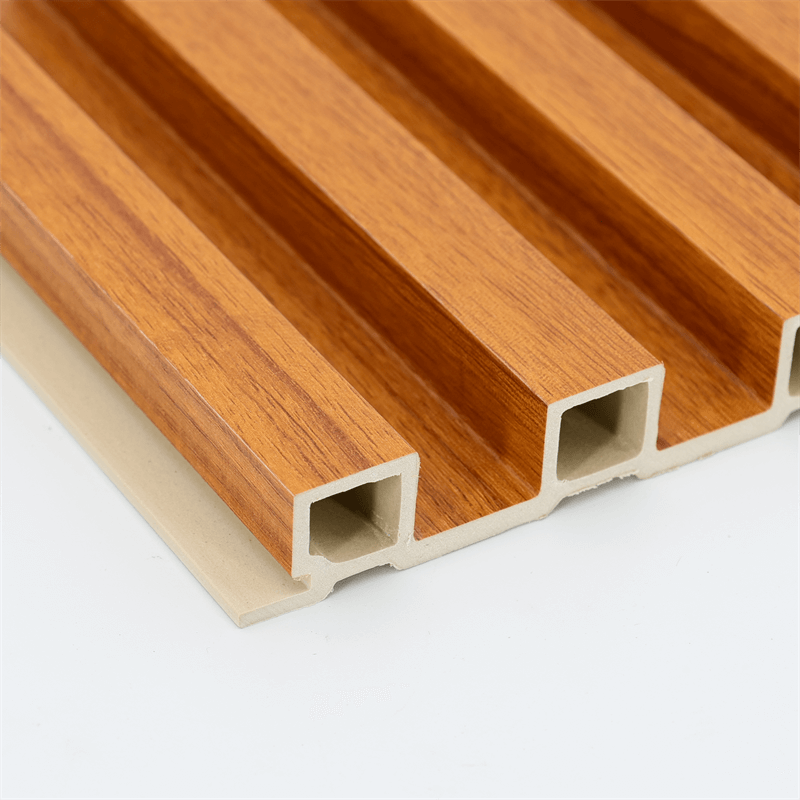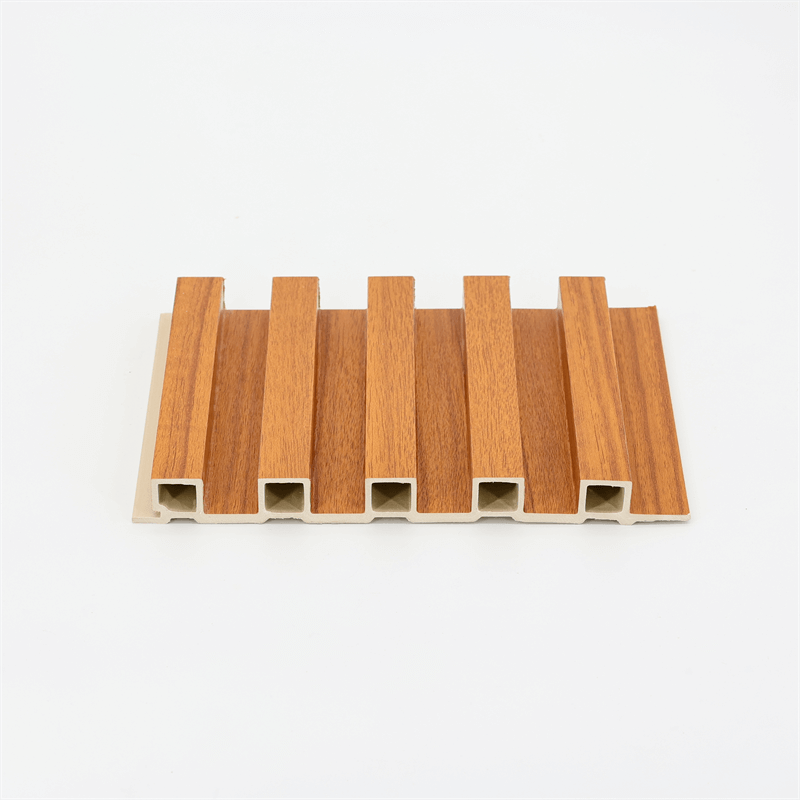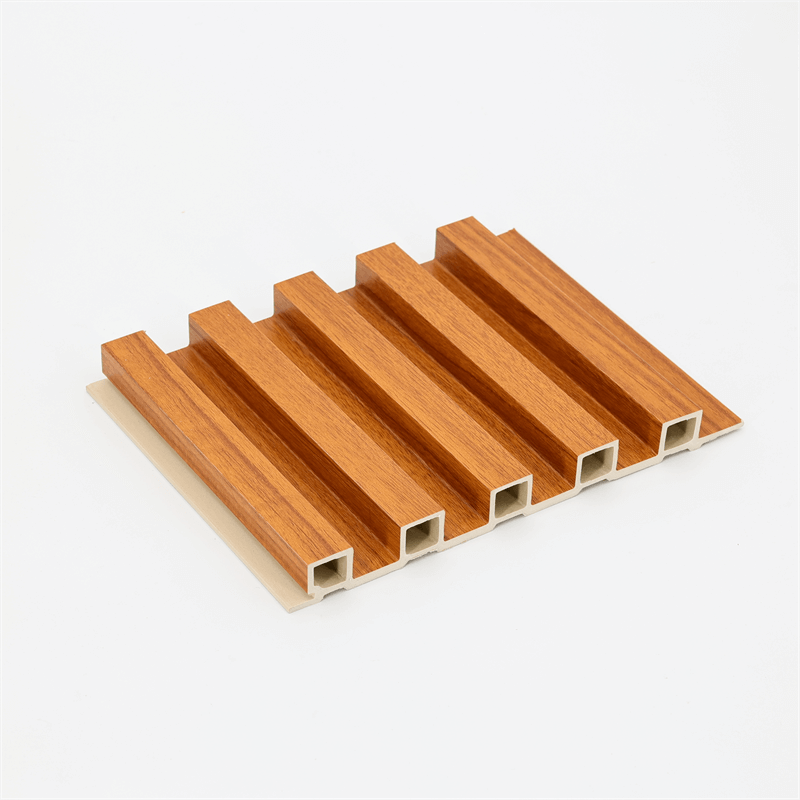Wall cladding plays a crucial role in both the aesthetics and functionality of a building.
In recent years, Wood-Plastic Composite (WPC) wall panels have emerged as a revolutionary solution for wall cladding in construction projects.
With their unique blend of natural wood fibers and synthetic polymers, WPC wall panels offer a range of benefits, including durability, versatility, sustainability, and design possibilities.
This essay explores the transformative impact of WPC wall panels on wall cladding, focusing on four key aspects: enhanced durability, design versatility, sustainable construction, and ease of installation.
I. Enhanced Durability: Weather Resistance and Longevity
WPC wall panels are renowned for their exceptional durability, making them a reliable choice for wall cladding in various environments.
Unlike traditional materials like wood or vinyl, WPC panels are engineered to withstand the rigors of weather and time.
The composition of WPC panels provides excellent resistance to moisture, rot, and insects, ensuring that the cladding remains intact even in humid or wet conditions.
These panels are also highly resistant to fading, warping, and cracking, thanks to their UV-stabilized properties.
This durability enables WPC wall panels to maintain their structural integrity and visual appeal over an extended period, reducing the need for frequent maintenance or replacement.
Furthermore, the dimensional stability of WPC panels ensures that they remain unaffected by changes in temperature and humidity.
This quality prevents expansion and contraction, which can lead to cracks or gaps in the cladding, compromising its functionality and aesthetics.
II. Design Versatility: Endless Possibilities
WPC wall panels offer unparalleled design versatility, allowing architects and designers to unleash their creativity and achieve unique visual effects.
These panels can be manufactured in a wide range of colors, textures, and finishes, including wood grain patterns that mimic the natural beauty of timber.
The design possibilities with WPC panels are virtually limitless. They can be used to create modern, contemporary, or even traditional aesthetics, depending on the desired style and architectural vision.
Whether it’s a residential, commercial, or public building, WPC wall panels can be customized to complement the overall design concept and create a cohesive look.
Moreover, WPC panels can be easily cut, shaped, and installed to achieve specific design elements, such as curves, angles, or decorative patterns.
They can be used to highlight architectural features or create visual focal points on the façade.
The flexibility of WPC panels empowers designers to create stunning and unique wall cladding designs that leave a lasting impression.
III. Sustainable Construction: Reducing Environmental Impact
In an era of increasing environmental consciousness, sustainable construction practices are gaining importance.
WPC wall panels offer a sustainable alternative to traditional wall cladding materials, contributing to a greener and more eco-friendly built environment.
WPC panels are primarily composed of recycled materials, including wood fibers sourced from post-industrial or post-consumer waste and plastic polymers.
By utilizing these recycled materials, WPC panels help reduce the demand for virgin resources and divert waste from landfills.
This resource conservation aspect makes WPC wall panels an environmentally responsible choice.
Furthermore, the manufacturing process of WPC panels consumes less energy compared to the production of conventional building materials.
This energy efficiency, combined with the use of recycled materials, helps minimize greenhouse gas emissions and reduce the carbon footprint associated with construction.
The longevity of WPC wall panels further enhances their sustainability credentials.
Their resistance to decay, moisture, and insects ensures a longer lifespan compared to traditional materials, reducing the need for frequent replacements and subsequent waste generation.
WPC wall cladding thus contributes to the creation of durable and sustainable buildings.
IV. Ease of Installation: Time and Cost Efficiency
The ease of installation of WPC wall panels adds to their appeal as a wall cladding solution.
These panels can be installed using various methods, depending on the specific project requirements and design preferences.
One common installation method is the use of interlocking systems, where the panels fit seamlessly together, creating a smooth and secure cladding surface.
This method eliminates the need for visible fasteners and ensures a clean aesthetic finish.
Another installation option is the use of concealed fastening systems, where the fasteners are hidden from view.
This method not only enhances the visual appeal of the cladding but also simplifies the installation process by reducing the time and effort required for fixing.
The lightweight nature of WPC panels further facilitates their installation.
They are easier to handle and transport compared to heavy materials like natural stone or concrete, resulting in reduced labor and logistical costs.
Additionally, WPC panels can be cut and shaped on-site using standard tools, allowing for customization and adjustments to fit the specific architectural requirements.

WPC wall panels have revolutionized wall cladding in construction with their enhanced durability, design versatility, sustainable attributes, and ease of installation.
Their weather resistance, long-term durability, and low maintenance requirements make them a reliable and long-lasting solution for wall cladding in diverse environments.
The design possibilities with WPC panels are vast, offering architects and designers the freedom to create visually striking and unique façades.
Moreover, their sustainable composition, utilizing recycled materials and reducing environmental impact, aligns with the growing demand for eco-friendly construction practices.
Lastly, the ease of installation of WPC wall panels simplifies the construction process, saving time, labor, and costs.
The various installation methods and customization options contribute to the efficiency and flexibility of using WPC panels as wall cladding.
As the construction industry continues to evolve and prioritize durability, sustainability, and design innovation, WPC wall panels emerge as a leading choice for redefining wall cladding.
Their transformative impact on wall aesthetics, functionality, and environmental responsibility makes them a compelling option for architects, builders, and property owners seeking a cutting-edge solution in the construction landscape.


